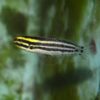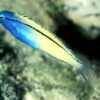The Evolution of the Dragon Image in Chinese Art Through the Centuries

The dragon, a mythical and powerful symbol in Chinese culture, has played a significant role in Chinese art for thousands of years. Its image has evolved and transformed throughout various dynasties, reflecting changes in social, political, and cultural contexts. From ancient pottery to imperial palaces, the dragon has been a central figure in Chinese art, symbolizing power, protection, prosperity, and the natural forces of the universe. This article explores the development of the dragon image in Chinese art, highlighting its evolution through different periods of Chinese history.
1. The Dragon in Prehistoric and Early Dynastic Art
The earliest representations of the dragon in Chinese art can be traced back to the Neolithic period, around 5,000 years ago, with the dragon figure gradually becoming more prominent in the art of the Shang (1600-1046 BCE) and Zhou (1046-256 BCE) dynasties. During this time, the image of the dragon was often depicted in a more abstract and stylized form, often resembling serpentine creatures or other mythical beasts.
In the Shang dynasty, the dragon was commonly represented in the form of coiled serpent-like figures on bronzeware, jade carvings, and pottery. These early depictions of the dragon were often highly abstract, featuring only the head or part of the body, with intricate designs that emphasized the creature’s mystical and supernatural qualities. The dragon was thought to represent a connection between the heavens and the earth, acting as a mediator between humans and the divine.
Jade objects, such as bi disks and congs, from the Shang and Zhou periods, often feature dragon motifs. These items were believed to have spiritual significance and were used in rituals to honor ancestors and the gods. The presence of the dragon on these objects indicated its role as a symbol of divine power and protection. The abstract dragon images were intended to invoke the supernatural strength of the creature, ensuring safety, prosperity, and harmony.
2. The Dragon in Imperial Art (Han to Tang Dynasties)
As China moved into the imperial dynasties, particularly during the Han (206 BCE – 220 CE) and Tang (618–907 CE) periods, the image of the dragon began to take on more complex and realistic features. During this time, the dragon was no longer just an abstract symbol but evolved into a fully realized mythological creature, with elaborate details and intricate depictions of its body, claws, horns, and scales.
Han Dynasty (206 BCE – 220 CE)
During the Han dynasty, the dragon became closely associated with the emperor. It symbolized imperial authority and the divine right to rule. The Han emperors were often depicted as descendants of the dragon, with the creature representing the emperor’s power and connection to the gods.
In the Han period, dragons were often depicted in art on silk banners and tombs. The most famous example of a dragon in Han art is the Dragon Tomb reliefs, which depict the imperial family and their connection to the dragon. These depictions were more detailed than those of earlier periods, showcasing the dragon’s role as a symbol of celestial power.
Tang Dynasty (618–907 CE)
By the Tang dynasty, the dragon had become even more elaborately portrayed in Chinese art. This period saw the rise of painted dragons, often appearing in temple murals, ceramics, and porcelains. Dragons during the Tang period were shown in more dynamic poses, often with their bodies twisting and coiling in midair, giving them a sense of movement and power.
One of the most important developments during the Tang dynasty was the use of the dragon in imperial clothing and regalia. The emperor’s robes were often embroidered with a five-clawed dragon, a symbol of the emperor’s supreme authority. This motif became a standard feature of imperial Chinese attire, symbolizing the divine right of the emperor to rule over the land.
Dragons were also featured prominently in ceramic art during the Tang dynasty. Porcelain items, including vases, plates, and figurines, were decorated with intricate dragon motifs, often alongside other auspicious symbols such as phoenixes and peonies. The dragon was seen as a symbol of good fortune, and its depiction in these works of art was meant to bring prosperity and protection to the home.
3. The Dragon in the Song and Yuan Dynasties
During the Song Dynasty (960–1279 CE) and the Yuan Dynasty (1271–1368 CE), the dragon image continued to evolve and take on new meanings. These periods saw significant advancements in Chinese painting and ceramics, and the dragon played a central role in the artistic traditions of these times.
Song Dynasty (960–1279 CE)
In the Song dynasty, the dragon became more stylized and abstract in Chinese art. Artists began to emphasize the graceful and fluid movements of the dragon, focusing on its elegance and spiritual qualities rather than its physical strength and dominance. Dragons in Song art were often portrayed in a more gentle, flowing style, with elongated bodies and softer features, symbolizing the harmony between the natural world and the divine.
The dragon’s association with the emperor remained strong, but during this period, there was a shift in how dragons were depicted in art. Instead of appearing in the traditional imperial context, the dragon was often integrated into landscape paintings, where it symbolized the natural forces of the universe. In these works, the dragon was often portrayed as part of the sky or water, evoking the creature’s connection to cosmic energies and the forces of nature.
Yuan Dynasty (1271–1368 CE)
The Yuan dynasty, established by the Mongols, brought about a significant change in Chinese art. The Mongol rulers adopted many Chinese cultural practices, including the use of the dragon as an imperial symbol. However, the Yuan period also saw the dragon being incorporated into Mongol art styles, which often featured more bold and geometric depictions.
During this period, the dragon continued to be depicted in a variety of mediums, including ceramics and silk embroideries. The imagery of the dragon was often used in ceramic ware and porcelain, where it was painted or molded into intricate patterns. Yuan-period porcelain featured dragons in a variety of stylized designs, some of which were meant to be auspicious gifts for high-ranking officials and members of the royal court.
4. The Ming and Qing Dynasties: The Dragon as an Imperial Icon
The Ming (1368–1644 CE) and Qing (1644–1912 CE) dynasties saw the height of the dragon’s association with imperial power and authority. The image of the dragon became the central motif in a variety of royal and courtly art forms, including imperial robes, paintings, ceramics, and architectural decorations.
Ming Dynasty (1368–1644 CE)
During the Ming dynasty, the five-clawed dragon became the official symbol of the emperor. The dragon was depicted in bold, stylized forms, with exaggerated features that emphasized its strength and power. The Ming emperors often commissioned elaborate dragon robes, which featured intricate dragon motifs embroidered onto silk. These robes were worn only by the emperor, and their vivid colors and detailed designs symbolized the emperor’s supreme authority.
In addition to robes, imperial ceramics during the Ming period often featured dragons in dynamic, powerful poses. Blue-and-white porcelain became particularly famous during the Ming era, with dragon motifs frequently appearing on plates, vases, and bowls.
Qing Dynasty (1644–1912 CE)
The Qing dynasty saw the continuation of the dragon’s role as a symbol of imperial authority. The Qing emperors, who were of Manchu origin, continued the tradition of the five-clawed dragon, though their depictions often included more elaborate details. Qing-period dragon art was characterized by intricate designs and luxurious materials, often showcasing dragons surrounded by clouds, waves, and other auspicious symbols.
In addition to its use in imperial art, the dragon also appeared in Qing architectural decoration, particularly in palaces and temples. Dragons adorned the roofs of royal buildings, symbolizing imperial power and the connection between the emperor and the divine.
5. The Dragon in Modern and Contemporary Chinese Art
In the 20th and 21st centuries, the dragon has continued to inspire Chinese artists, though its representation has become more diverse and abstract. Contemporary Chinese artists have explored new interpretations of the dragon, blending traditional forms with modern artistic styles.
In contemporary Chinese painting, dragons may appear as part of a larger narrative about Chinese identity, tradition, and national pride. Artists have experimented with the dragon’s image, often using bold colors, surreal forms, and abstract expressions to convey deeper cultural and philosophical meanings.
Sculpture, architecture, and graphic design have also embraced the dragon, incorporating its powerful and elegant form into modern buildings, public art installations, and commercial branding. The dragon has become an enduring symbol of China’s rich history and culture, continuously adapting to the tastes and values of the modern world.
Conclusion: The Timeless Legacy of the Dragon in Chinese Art
The dragon has been an enduring symbol in Chinese art for thousands of years, evolving alongside changes in Chinese society, politics, and culture. From its early, abstract representations in ancient jade carvings to its grand, majestic depictions on imperial robes and in modern art, the dragon’s image has remained a powerful force, embodying strength, protection, prosperity, and divine authority.
Today, the dragon continues to captivate artists and viewers alike, representing not only the ancient traditions
of China but also the dynamic and evolving identity of the Chinese people. Its long-standing presence in Chinese art underscores its central role in Chinese culture, making the dragon an eternal symbol of power, resilience, and beauty.

